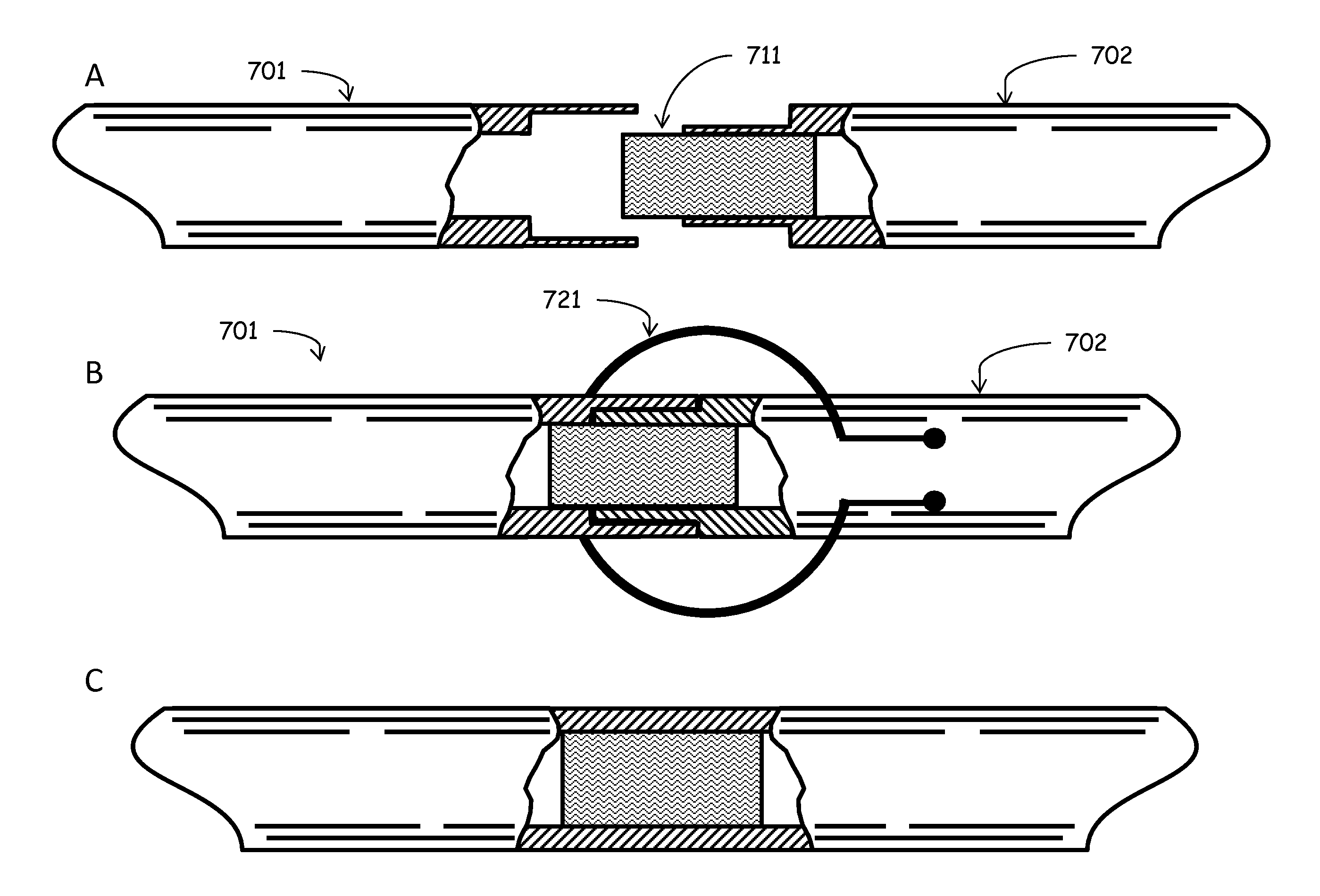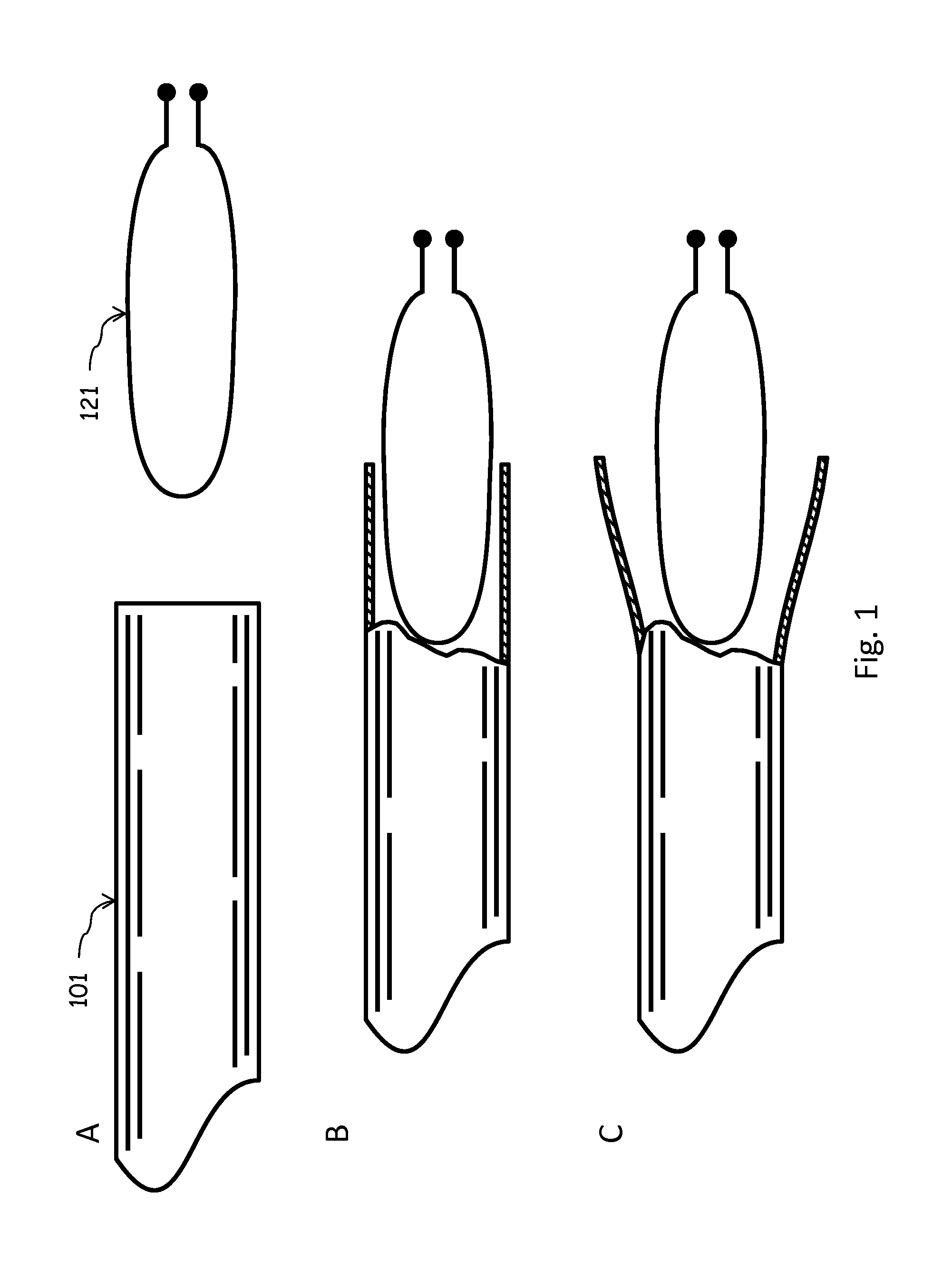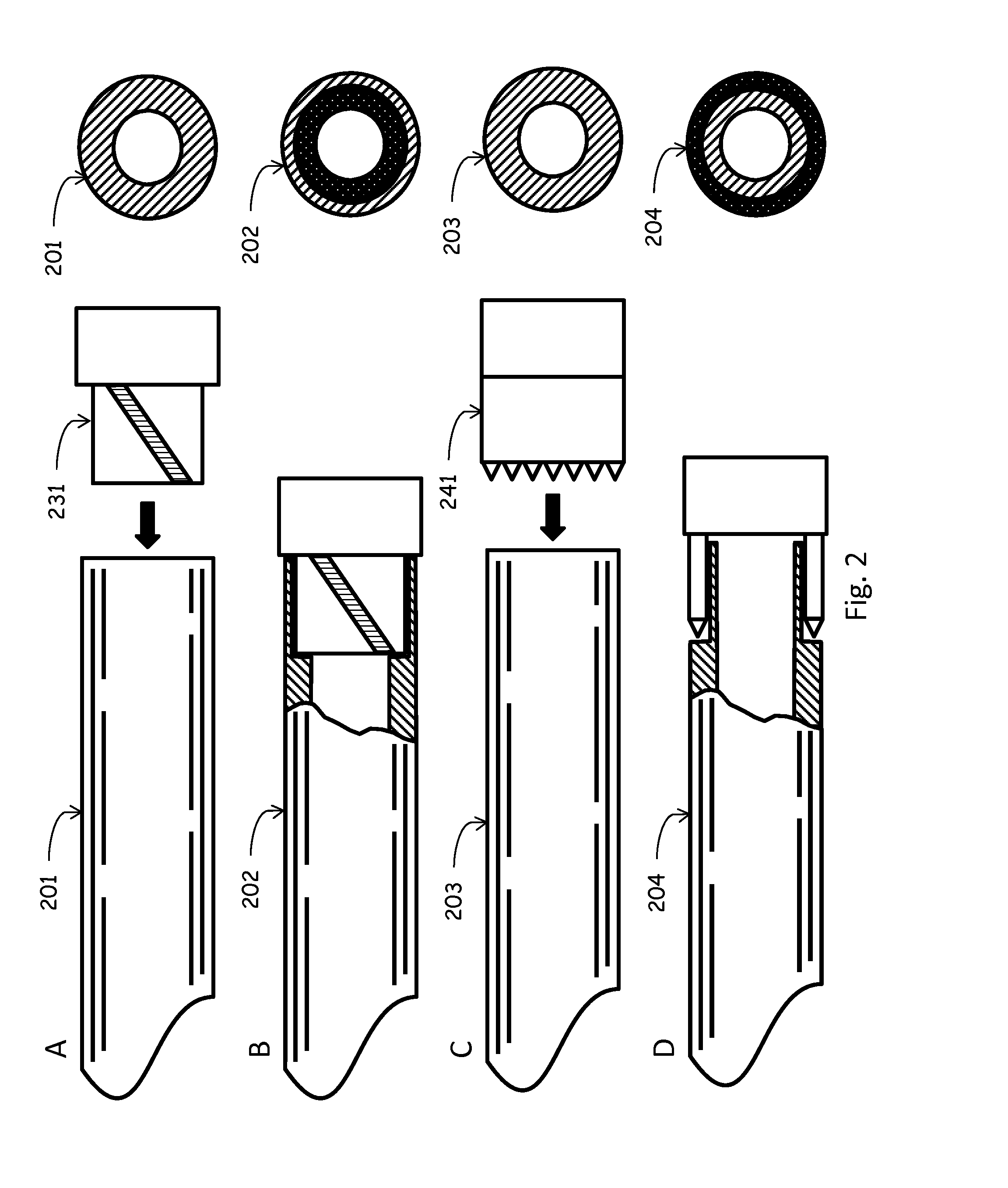Coiled tubing lap welds by magnetic pulse welding
a magnetic pulse welding and lap welding technology, applied in the field of joining tubing, can solve the problems of difficulty in successfully delivering ct through its full length, inability to achieve, and large time savings, and achieve the effect of high strength ct joint and little or no loss of ct integrity
- Summary
- Abstract
- Description
- Claims
- Application Information
AI Technical Summary
Benefits of technology
Problems solved by technology
Method used
Image
Examples
example 1
EMPT Tubing Expansion
[0039]Coiled tubing is expanded to where the inside diameter of the expanded tubing is greater than the outside diameter of the complementary tubing end. In one embodiment a damaged section of tubing is identified and removed. In another embodiment, one end of a CT is to be joined with an existing CT. The CT end is inspected, if the tubing is too thin, misshapen, cracked or damaged, the piece may be cut back. The end piece may be cut flat and or cleaned of burrs, dirt, and anomalies. Once the end is ready to be expanded an expansion coil 121 is inserted into the coiled tubing 101. A pulsed energy source is transmitted through the expansion coil 121 causing the coiled tubing 101 to expand as shown in FIG. 1. Optionally a mandrel, casing, or die may be placed around the CT to obtain a specific geometric shape or diameter of expansion. If the CT has insufficient conductivity, it may cause ohmic losses and heating. To overcome this a driver, i.e. thin walled copper,...
example 2
Conventional Tubing Reaming
[0040]CT is reamed to create a male and female end as shown in FIG. 2. One simple method for reaming involves using a press to insert a reaming bit internally 231 or externally 241. The reaming bit has an exact diameter internally and externally ensuring that the reamed female end will fit tightly over the reamed male end. There may be additional clamps, vices and guides in place to ensure the reaming is centered and that the two ends are complementary to very high tolerances. After reamed, the female end 202 has an outside wall and the internal surface is cut away. The male end 204 has an inside wall and the outside surface is cut away. The cut away section is depicted as black area in the end view.
[0041]CT may be reamed to create overlapping ends of various geometries as shown in FIG. 3. This may be done with shaped bits or with a rotating die that is placed over the end of the tubing. FIG. 3A depicts complementary female 301 and male 302 ends that are n...
example 3
MPW with Expanded Tubing
[0042]Expanded tubing may be joined to standard CT to create a continuous piece of CT with no disruption to the internal diameter of the tubing as shown in FIG. 4. A cleaned CT end 401 is placed in an expanded tubing end 402. The MPW compression coil 421 is used to compress the expanded tubing onto the CT end creating a continuous piece of CT. Because the MPW retains the strength of the bonded materials, this weld will not decrease the tubing quality and may be used on tubing as it is being placed downhole.
PUM
| Property | Measurement | Unit |
|---|---|---|
| diameter | aaaaa | aaaaa |
| diameter | aaaaa | aaaaa |
| yield strengths | aaaaa | aaaaa |
Abstract
Description
Claims
Application Information
 Login to View More
Login to View More - R&D
- Intellectual Property
- Life Sciences
- Materials
- Tech Scout
- Unparalleled Data Quality
- Higher Quality Content
- 60% Fewer Hallucinations
Browse by: Latest US Patents, China's latest patents, Technical Efficacy Thesaurus, Application Domain, Technology Topic, Popular Technical Reports.
© 2025 PatSnap. All rights reserved.Legal|Privacy policy|Modern Slavery Act Transparency Statement|Sitemap|About US| Contact US: help@patsnap.com



